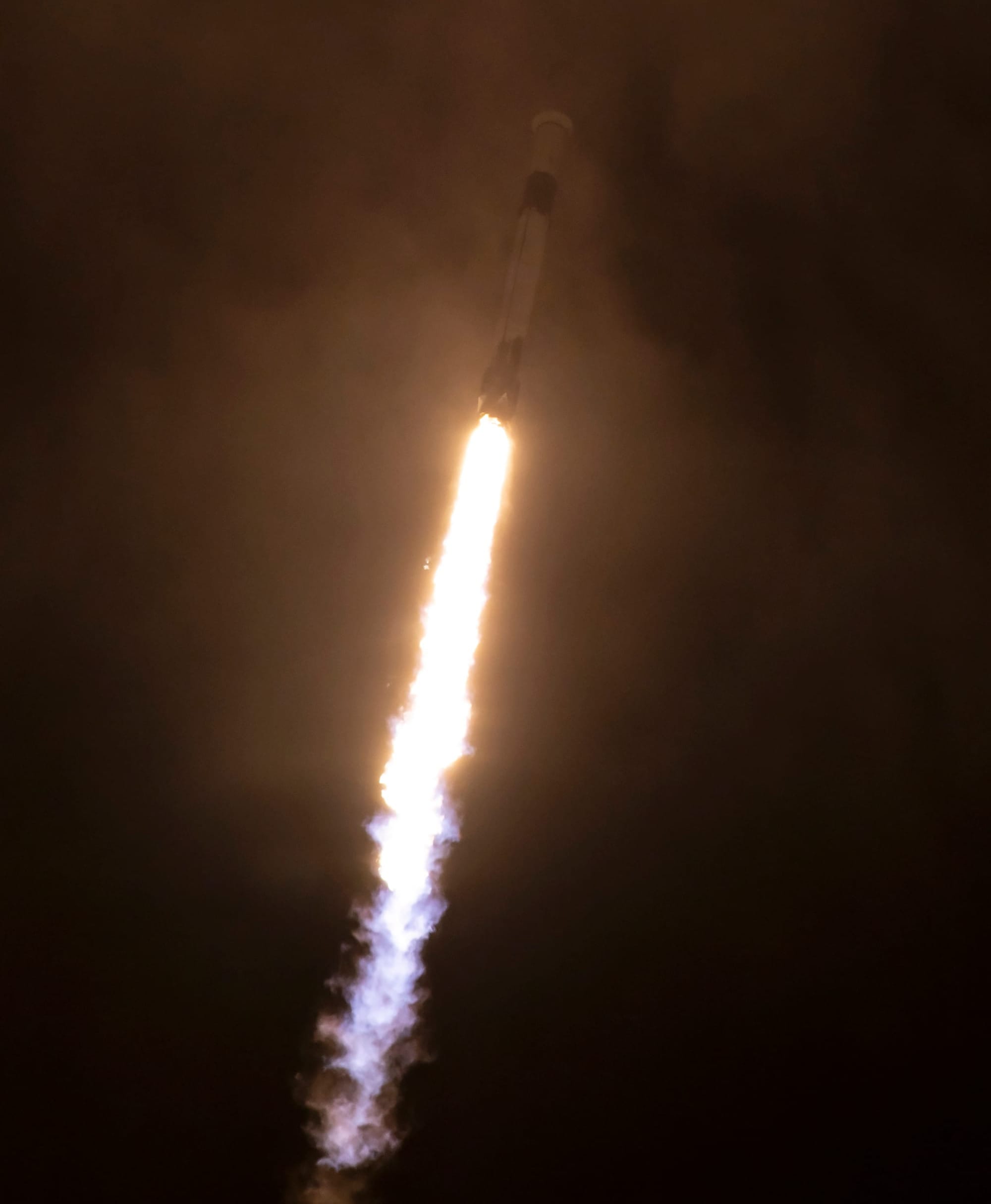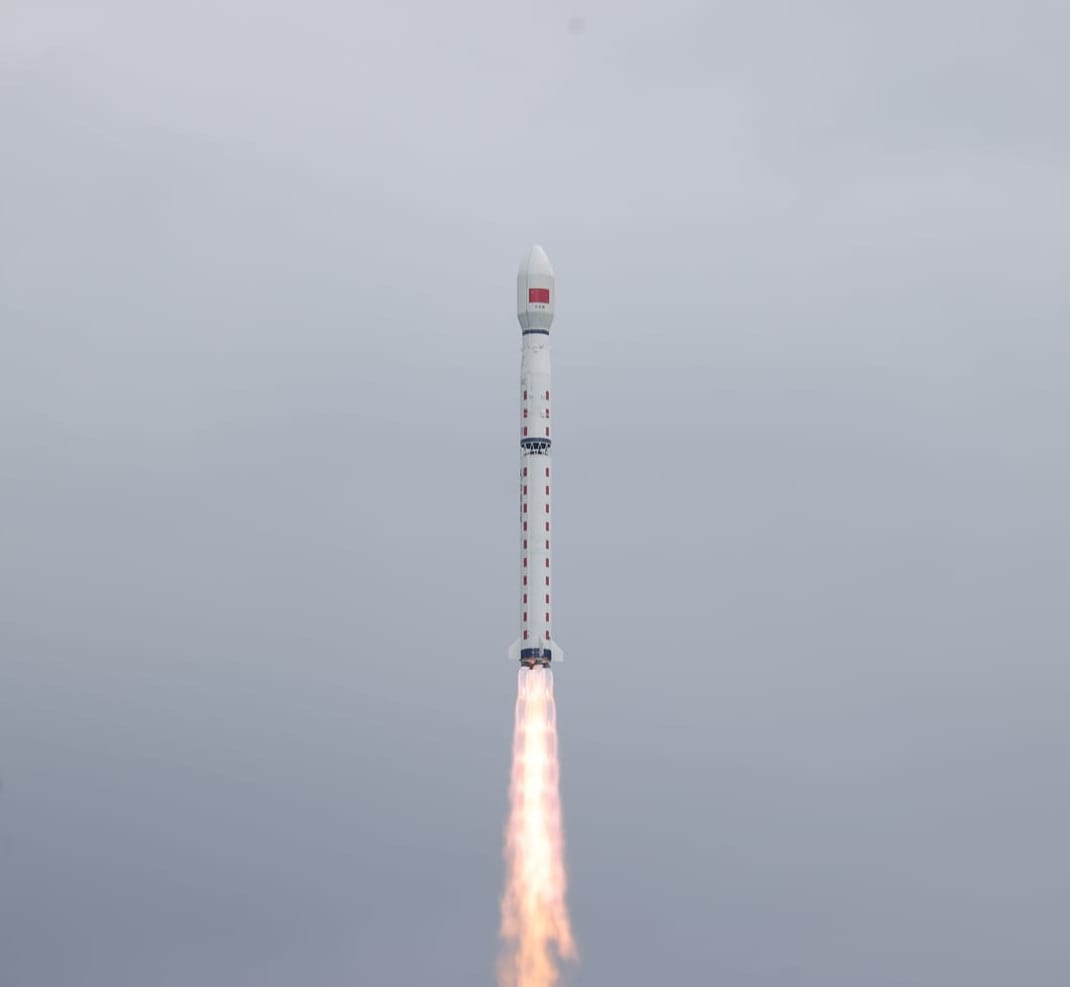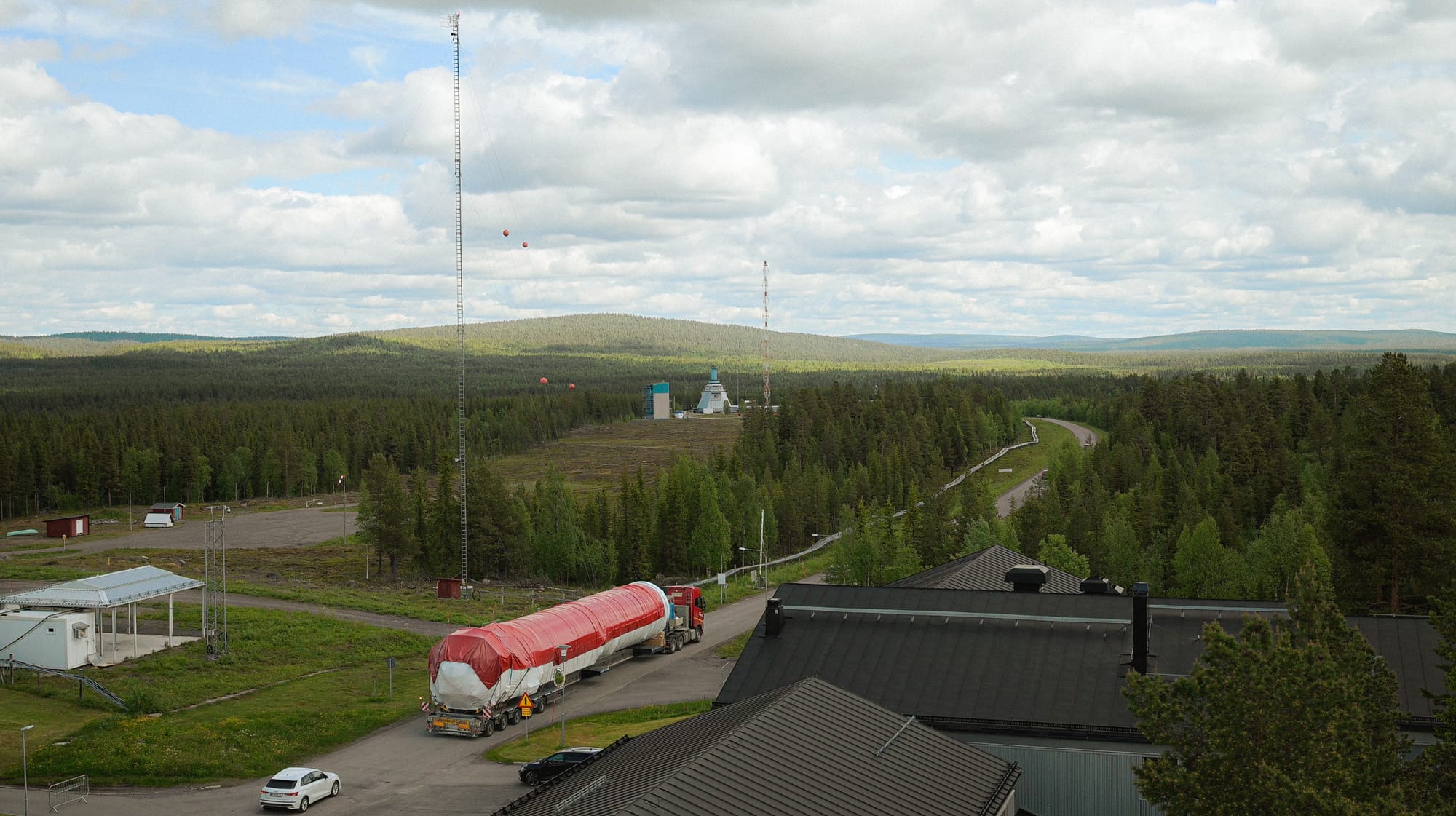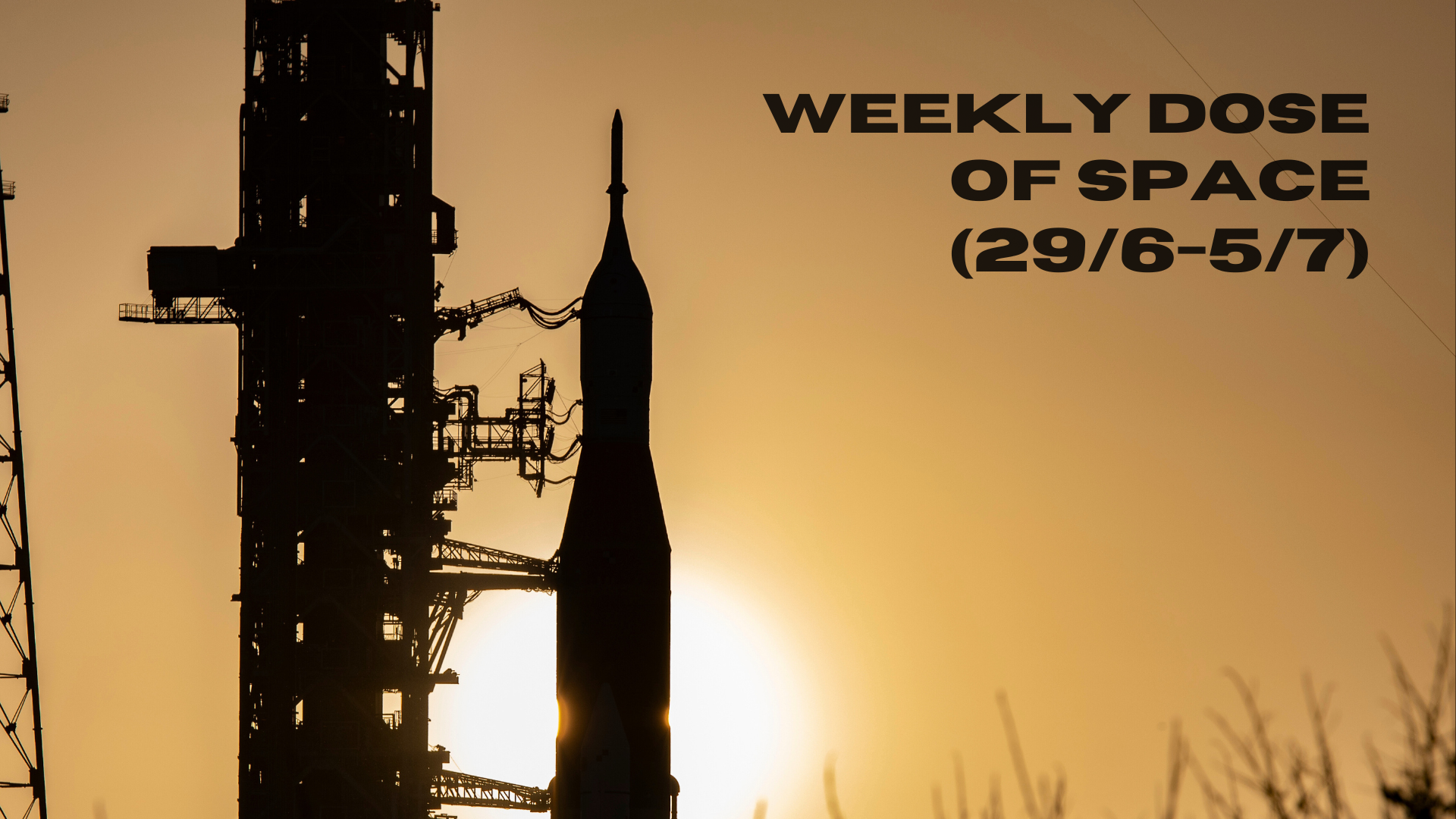Table of Contents
Welcome back to Weekly Dose of Space! This week saw five launches globally, with one suborbital mission. News from the week included NASA and the U.S. Space Force receiving additional funding, as well as Europe's reusable rocket program slowly progressing. As always, we'll also look ahead to what the worldwide launch schedule might look like next week.
Launches This Week
June 29th - New Shepard with NS-33
Blue Origin performed New Shepard's suborbital NS-33 mission from its West Texas launch site, carrying Allie Kuehner, Carl Kuehner, Leland Larson, Freddie Rescigno, Owolabi Salis, and James Sitkin above the Kármán line. The vehicles used during the mission were booster NS5, flying for the fourth time, and capsule RSS Kármán Line, making its third flight.
🔁 NS-33 Replay: Booster Touchdown! pic.twitter.com/VSobIfhu5v
— Blue Origin (@blueorigin) June 29, 2025
New Shepard booster NS5 landing after supporting the NS-33 mission, via Blue Origin on Twitter.
July 1st - Falcon 9 with MTG-S1
A Falcon 9 launched the MTG-S1 spacecraft from Launch Complex 39A, in Florida, to a geostationary transfer orbit. Supporting this mission was booster B1085, for its ninth flight, with a landing on the drone ship 'Just Read The Instructions' downrange.

July 2nd - Falcon 9 with Starlink Group 10-25
Another Falcon 9 launched twenty-seven Starlink satellites to low Earth orbit from Space Launch Complex 40, in Florida. Booster B1067 supported this launch for its twenty-ninth flight, landing downrange on the drone ship 'A Shortfall Of Gravitas'.

July 3rd - Long March 4C with Shiyan-28B-01
A Long March 4C blasted off from the Xichang Satellite Launch Center carrying Shiyan-28B-01 to low Earth orbit. Shiyan-28B-01 is planned to be utilized for space environment detection and related technical tests, which may include tracking other spacecraft and debris.

July 3rd - Soyuz 2.1a with Progress MS-31
A Soyuz 2.1a launched from the Baikonur Cosmodrome carrying the Progress MS-31 spacecraft toward the International Space Station. Following launch, Progress MS-31 docked to the Poisk module on the Russian segment of the space station.
— afec7032 🇷🇺 (@robert_savitsky) July 3, 2025
Soyuz 2.1a launching Progress MS-31 from Baikonur, via robert_savitsky on Twitter.
In Other Space News
SLS funded in reconciliation bill
The U.S. Senate and House of Representatives have recently passed President Trump's 'One Big, Beautiful Bill', with it being signed into law on July 4th. Over the next decade, the bill is expected to spend trillions on defence and tax cuts while cutting social security and healthcare programs to fund the former.
Also included in the bill is 10 billion dollars for NASA amid major budget cuts and agency restructuring. Funding for NASA includes the following, via SpacePolicyOnline.com:
- 4.1 billion for SLS rockets for Artemis IV and Artemis V.
- 2.6 billion to fully fund the Gateway lunar space station being built in cooperation with Europe, Japan, Canada, and the United Arab Emirates as part of the Artemis program.
- 20 million for a fourth Orion crew spacecraft for use with Artemis IV and reuse on subsequent missions.
- 1.25 billion for the ISS to ensure there is no gap between when the ISS ends in 2030 and new commercial space stations are in orbit to replace it.
- 325 million for the U.S. Deorbit Vehicle to propel the ISS from orbit into the Pacific Ocean at the end of its lifetime.
- 1 billion in “improvements” at five NASA fields centers: Stennis in Mississippi (120 million), Kennedy in Florida (250 million), Johnson in Texas (300 million), Marshall in Alabama (100 million), and Michoud in Louisiana (30 million).
- 700 million for a Mars Telecommunications Orbiter (MTO) that would be delivered by December 31, 2028.
- 85 million for Space Vehicle Transfer for “a space vehicle” to be transferred to a NASA Center involved in the Commercial Crew Program and placed on public exhibition.
Meanwhile, 'One Big, Beautiful Bill' is providing the U.S. Space Force with 40.1 billion in funding for 2026. It is unknown what the Space Force will spend its new billions on, but options include the 'Golden Dome' system, itself unclear in use, or on-orbit military assets.
Funding provided through the bill is expected to last both agencies for ten years.
Europe's Themis moves closer to testing

Europe's Themis reusable booster demonstrator, built by ArianeGroup, has recently arrived at the Esrange Space Centre, located in Sweden, after completing a journey of over 3,000 kilometers (~1,860 miles) from France. At Esrange, the demonstrator is being prepared for a series of tests regarding reusability, like a wet dress rehearsal, static fires, and a series of hops.
According to Andrew Parsonson of EuropeanSpaceflight.com, Themis represents Europe’s first full-scale demonstrator of a reusable rocket's first-stage, and is part of an initiative to foster the key technologies of future reusable launch systems. The Themis demonstrator is said to be 28 meters long.
Alongside the demonstrator arriving in Sweden, the vehicle's engine, known as Prometheus, completed a series of tests in June but was announced on July 2nd. Those tests included four ignitions in one day, at a test facility in France, to advance the development of the reusable rocket engine.
What to Expect Next Week
July 8th - Falcon 9 with Starlink Group 10-28
A batch of Starlink satellites is expected to head to low Earth orbit atop of a Falcon 9 from Space Launch Complex 40.







